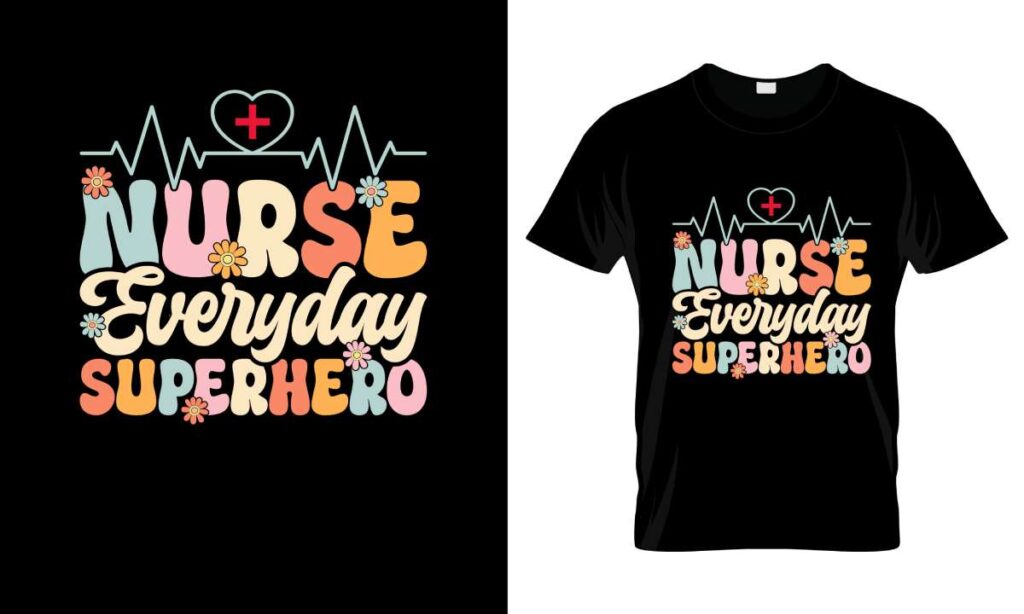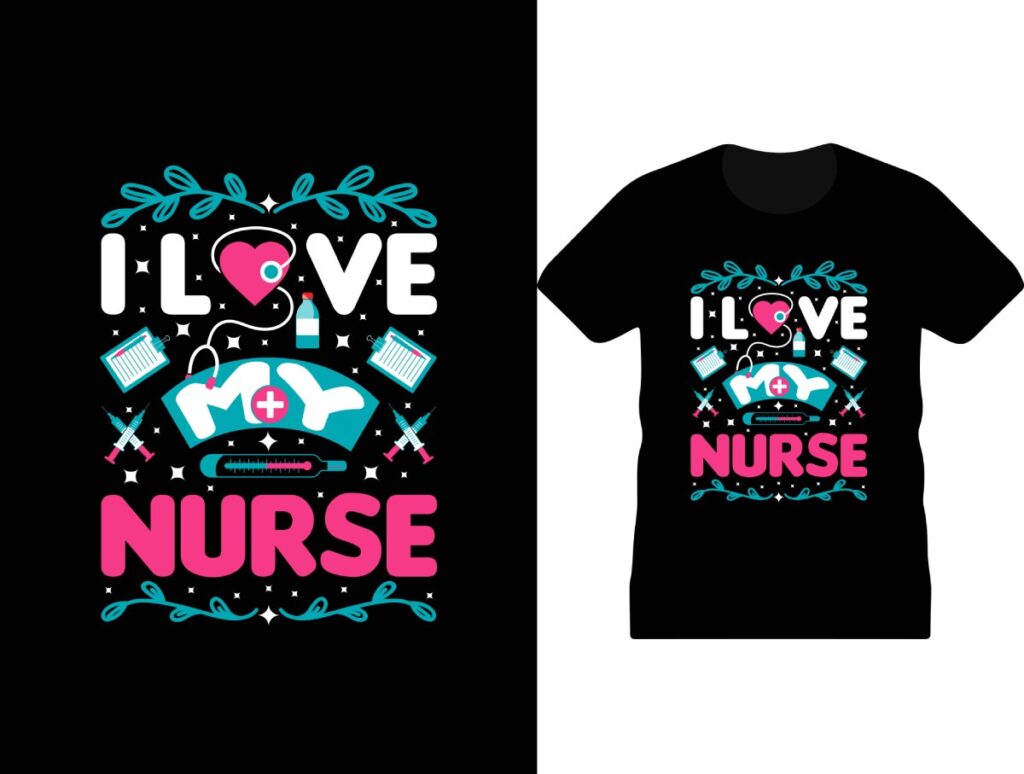The DTF printing process, or Direct to Film printing, has revolutionized the garment decoration industry by offering an innovative method for high-quality prints on various fabrics. This cutting-edge technology utilizes advanced water-based inks, alongside a special adhesive powder, to ensure vibrant designs can be transferred seamlessly onto garments. Unlike traditional methods, DTF transfer printing allows for intricate graphics and colorful designs, making it a favorite among designers and apparel decorators. As we dive deeper into the DTF design process, we will highlight its efficiency, versatility, and the sustainable printing methods that have emerged alongside this technology. With the garment printing landscape rapidly changing, understanding the nuances of DTF will provide valuable insights for anyone in the industry.
Direct to Film printing, often referenced in the textile industry as DTF transfer printing, serves as an advanced solution for producing stunning garment designs. This innovative approach utilizes specialized printers and eco-friendly inks that empower designers to achieve remarkable detail and clarity in their work. The versatility of this technique positions it as a key player in modern garment printing technology, especially among brands committed to sustainability. Additionally, the DTF process seamlessly accommodates various materials, enabling businesses to cater to a broader range of consumer preferences. As we explore its unique capabilities, it’s essential to recognize the impact DTF printing is making in promoting environmentally conscious practices within the apparel sector.
Understanding the DTF Printing Process
The DTF printing process, or Direct to Film printing, begins with the creation of a digital design. This design serves as the backbone of the entire production journey, allowing for a personalized touch that resonates with customers. Using high-end graphic design software, such as Adobe Illustrator, designers can create intricate and vibrant graphics that incorporate various elements like gradients and shadows. This level of detail is crucial since it sets the stage for the printing stage, ensuring that the final output captures the designer’s vision accurately.
Once the design is finalized, it’s printed onto a special film that uniquely embodies the DTF technology. Advanced printers utilize water-based inks that are specifically formulated to bond with different fabric types. The application of a specialized adhesive powder right after printing is what distinguishes DTF from other garment printing technologies. This powder adheres to the wet ink, creating a robust basis for the design, which, when cured, results in a durable print that stands out in both quality and vibrancy.
The Advantages of DTF Transfer Printing
DTF transfer printing boasts numerous advantages that set it apart from traditional garment printing methods. Foremost among these benefits is the ability to handle complex designs with ease, a feat that many other printing techniques struggle to achieve. This versatility allows for extensive creative freedom, enabling designers to deliver unique and personalized products that cater to specific consumer demands. Furthermore, DTF printing yields high-quality, durable prints that resist fading and cracking, making it a reliable choice for those seeking long-lasting apparel.
In addition to its design capabilities, DTF transfer printing is also cost-effective, particularly for small businesses and startups. It eliminates high setup costs commonly associated with traditional printing methods, thus allowing for short production runs without significant financial strain. This feature is especially appealing in today’s fast-paced fashion industry, where customization and quick turnaround times are paramount. With DTF transfer printing, entrepreneurs can effortlessly provide tailored solutions that meet modern market expectations.
The Curing Stage of the DTF Process
One of the critical stages in the DTF printing process is curing, which ensures the ink and adhesive bond effectively to the film. After the design is printed, it undergoes curing using a heat tunnel or heat press, which is essential for achieving durability in the end product. The heat activates the adhesive, melting it to create a strong bond with the ink and fabric. This step is vital for maintaining the integrity of the print over time, as it guarantees that the design remains intact even after repeated washing.
Proper curing not only enhances the durability of the garment but also impacts the overall quality of the print. Insufficient curing may result in designs peeling or fading prematurely, undermining the intended visual appeal. Thus, maintaining optimal temperature and pressure during the curing stage is crucial for achieving industry-standard prints. The attention to detail in this step reflects the commitment to producing high-quality garments that stand up to the rigors of daily wear, ultimately contributing to customer satisfaction.
Innovations in DTF Printing Technology
Recent innovations in DTF printing technology reveal a trend toward enhancing both efficiency and output quality. Manufacturers continuously innovate new ink formulations and adhesive properties that significantly improve adhesion and wash durability. These advancements not only ensure that designs withstand multiple washes without losing vibrancy but also cater to a wider array of fabrics, including blends and unconventional materials. By embracing these technological advancements, businesses can provide superior products that resonate with consumers seeking quality.
Moreover, the growing focus on sustainability within the DTF printing industry is transforming how businesses operate. Eco-friendly inks and processes are gaining traction, aligning with consumer preferences for responsibly produced goods. Companies that adopt sustainable printing methods not only appeal to environmentally conscious customers but also position themselves as leaders in an increasingly competitive market. This shift towards greener practices reflects a broader industry trend that values responsible consumption, highlighting the role that DTF printing can play in fostering sustainability in the garment sector.
Sustainability in DTF Printing
Sustainability has become a cornerstone of modern printing technologies, and DTF printing is no exception. As the industry shifts towards environmentally friendly practices, many DTF printing solutions now utilize eco-conscious inks and materials that minimize environmental impact. These advancements not only cater to the growing demographic of environmentally-aware consumers but also establish businesses as frontrunners in sustainability within the textile industry. By investing in eco-friendly technologies, companies can significantly reduce their carbon footprint while still delivering high-quality printed products.
Implementing sustainable printing methods aligns with the increasing demand for transparency and eco-responsibility in fashion. In today’s market, consumers are more educated about their purchasing decisions and often prefer brands that demonstrate a commitment to sustainability. By adopting DTF printing, businesses can leverage innovative and responsible practices that resonate with modern consumer values, ultimately fostering brand loyalty and encouraging repeat purchases. This embrace of sustainability not only benefits the environment but also serves as a competitive advantage in the rapidly evolving garment industry.
The Versatility of DTF in the Garment Printing Industry
The versatility of DTF printing makes it an appealing choice for a variety of applications in the garment industry. One of the standout features of this technique is its compatibility with numerous fabric types, including cotton, polyester, and various blends. This wide material compatibility opens up endless possibilities for designers and businesses looking to create customized apparel that meets diverse consumer preferences. Additionally, DTF printing excels in producing high-quality prints that capture intricate designs, which are increasingly in demand in fashion.
This adaptability allows businesses to cater to different markets, from bespoke clothing retailers to promotional merchandise providers. As the demand for unique, personalized apparel grows, DTF printing stands out as a reliable option capable of delivering on these characteristics. Its quick turnaround times and ability to produce detailed prints without compromising quality further enhance its position as a leading choice in garment printing technology. Businesses that harness the versatility of DTF can stay ahead of market trends while meeting the evolving needs of their customers.
Frequently Asked Questions
What is the DTF printing process and how does it work?
The Direct to Film (DTF) printing process involves creating a digital design which is printed onto a special film using water-based inks. After applying adhesive powder, the film is cured with heat, ensuring durability. The final step involves transferring the design onto a garment, permanently bonding it to various fabric types, making DTF a versatile option in garment printing technology.
How does DTF transfer printing differ from traditional screen printing?
DTF transfer printing differentiates itself from traditional screen printing by allowing for highly detailed and colorful designs without requiring multiple screens. DTF utilizes digital designs printed on film, making it more efficient for short runs and customized orders while ensuring high quality and durability after curing and transfer.
What are the advantages of using the DTF design process for small businesses?
The DTF design process offers small businesses versatility, quality, and cost-effectiveness. It enables the production of complex designs without high setup costs, allowing small businesses to produce custom apparel on demand. Additionally, DTF’s compatibility with various fabrics expands product offerings.
Are there sustainable printing methods included in the DTF printing process?
Yes, the DTF printing process incorporates sustainable printing methods through the use of environmentally friendly inks and adhesives. The growing focus on sustainability in DTF technology aligns with modern consumer demands for eco-conscious printing practices.
What types of garments can benefit from DTF printing technology?
DTF printing technology is compatible with a wide range of garments, including cotton, polyester, and blended fabrics. This versatility allows businesses to use DTF for diverse apparel products, from t-shirts and hoodies to athletic wear and fashion items.
How can the curing step in the DTF process affect the final print quality?
The curing step in the DTF process is critical as it melts the adhesive, permanently bonding the ink to the film and fabric. Proper curing ensures that the prints achieve high durability, resist fading, and maintain vibrant colors after multiple washes, which is essential for the overall quality of the finished product.
| Step | Description |
|---|---|
| 1. Design Creation | Create digital designs using graphic design software, accommodating intricate details and vibrant colors. |
| 2. Printing | Print the design onto a special film using water-based inks, applying adhesive powder that bonds with the fabric during curing. |
| 3. Curing | Cure the printed film using heat, ensuring a strong bond between ink and film for durability. |
| 4. Transfer Application | Position the cured film on the garment and use heat to activate adhesive, bonding the design to the fabric. |
| 5. Finishing | Peel away the film to reveal the design and conduct quality inspection to ensure durability and appeal. |
Summary
The DTF printing process showcases a modern and efficient approach to garment decoration, encompassing the journey from a digital design to a finished product. This process not only allows for intricate designs and vibrant colors but also ensures the durability and quality of the prints. With its ongoing innovations focusing on sustainability and accessibility, DTF printing stands out as a preferred choice for businesses eager to meet the demands of contemporary consumers. By leveraging the benefits of DTF printing, designers and brand owners can enhance their creative offerings while aligning with the industry’s trend of sustainability, making it an ideal solution for a diverse range of fabrics and designs.



